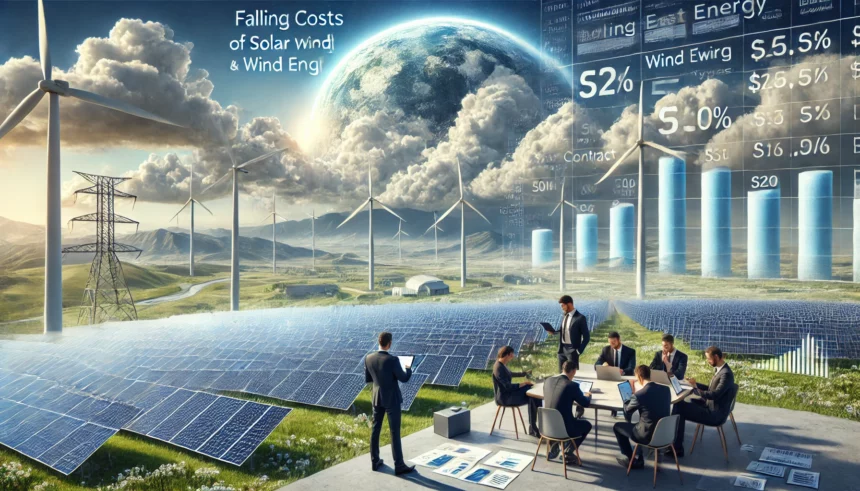Introduction
The cost-effectiveness of solar and wind energy is increasing their importance to the US grid. A recent study by Berkeley Lab highlights the benefits of these renewable sources, but also points out that consumers don’t always see these benefits directly in their energy bills.
Key Findings
- Lower Costs, Higher Value: The declining costs of solar and wind power have enhanced their value as protection against fluctuating wholesale power prices.
- Net Market Value: The “net market value” measures the cost savings from using solar and wind instead of buying electricity from the wholesale market. This value has increased as solar and wind costs continue to fall.
Study Insights
Improved Economics
The Lawrence Berkeley National Laboratory (LBNL) study shows that the economic benefits of utility-scale solar and wind energy in the US have improved over time. In 2022 alone:
- Solar energy generated $2.1 billion in net value.
- Wind energy generated $100 million in net value.
Consumer Savings
These values suggest potential savings for energy purchasers, which could lead to lower consumer energy bills. However, whether these savings reach consumers depends on market structures and contract types.
Contractual Structures and Consumer Benefits
Long-term Power Purchase Agreements (PPAs)
- Benefit Consumers: Fixed-price PPAs often pass on the savings from solar and wind to consumers.
- Hedge Against Price Volatility: These agreements provide stability and lower costs when wholesale prices are high.
Renewable Energy Certificates (RECs)
- Premium Costs: Consumers usually pay more for fixed-price unbundled RECs, which means they don’t benefit as much from lower solar and wind costs.
Recommendations for Purchasers
To ensure that retail consumers, especially residential customers, benefit from the improved economics of renewable energy, the study recommends:
- Contracting Structures: Consider physical and virtual PPAs and index-based REC contracts that allow consumers to benefit from the hedge value of renewable energy.
Conclusion
The LBNL report, titled “Grid Value and Cost of Utility-Scale Wind and Solar: Potential Implications for Consumer Electricity Bills,” provides valuable insights into how the falling costs of solar and wind energy can benefit the US market. The report encourages electricity purchasers to adopt contracting practices that pass on these savings to consumers, ensuring that the economic advantages of renewable energy are felt across the board.
















